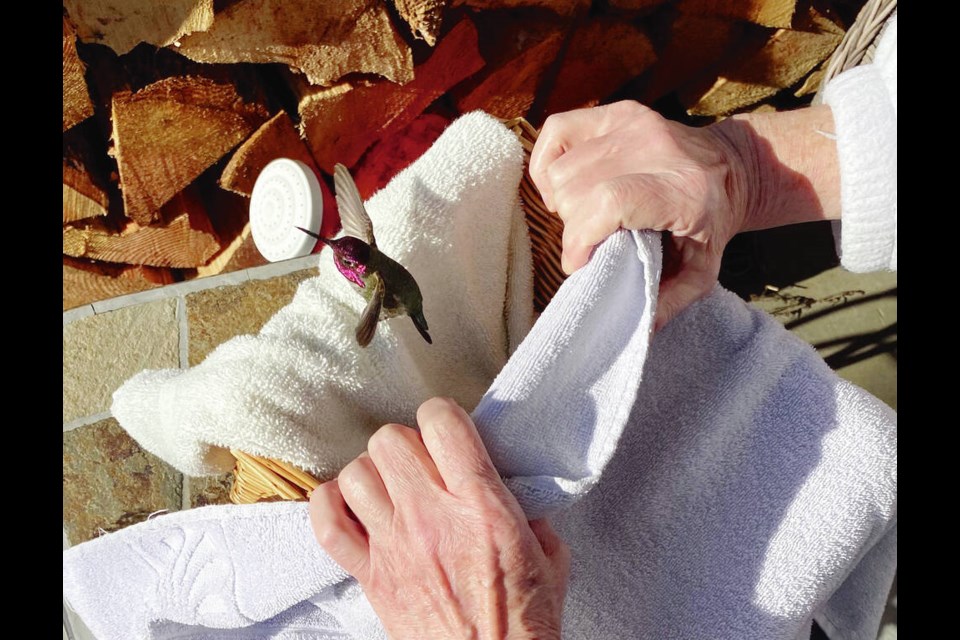The tiniest of birds are struggling as the region plunges into a deep freeze, but there are ways you can help keep the hummingbirds humming.
Ann Nightingale of the Rocky Point Bird Observatory said sugar-water feeders can be wrapped in Christmas lights or the tubes covered in socks with “pocket warmers” inside to keep the liquid from freezing.
Feeders can also be brought in overnight, but should be back before the sun rises, as hummingbirds often awake in the early-morning darkness and need that shot of energy first thing, she said. “They are suffering when it gets cold,” said Nightingale. “So any help we give is good for them.”
The Island has two types of hummingbirds. Rufous hummingbirds migrate in the fall and are on the U.S. Gulf Coast or in Mexico right now, but Anna’s hummingbirds stay all year, often toughing out cold and snowy stretches with the help of human feeding.
On Thursday, temperatures in Victoria dropped to –11 C, and much colder with the wind chill. It was the coldest day in 55 years at Gonzales weather station in Fairfield and other cold records were set at Victoria airport, the Malahat and Cowichan Valley.
It’s the kind of weather that’s hard on hummingbirds, which only weigh about four grams.
During sub-zero conditions, hummers can enter a state of torpor that resembles death, where they hang upside down on feeders or drop to the ground, Nightingale said.
She said torpor is like a “mini hibernation,” where their heart rate, breathing and other bodily functions slow down.
She said if you find a hummingbird in torpor, place it in a box with a cloth covering and bring the box indoors.
“This should let them warm slowly,” said Nightingale.
A feeder can be placed in the box, but don’t try to force-feed the hummer, and check every half hour on the bird’s condition.
It can take several hours before a bird comes out of torpor.
If the hummer wakes but doesn’t fly away, take it to a wildlife rehabilitation facility like WildARC in Metchosin or MARS in Merville as soon as possible, Nightingale said.
She said it’s not advisable or even legal to try to rehabilitate the bird yourself, as they need specific proteins in addition to sugar water.
Nightingale has her own solution to keeping her feeders warm. She built a wood box with rigid insulation on the outside and two holes on top and a trouble light inside.
She places a hummingbird feeder over one hole and a dish of water on the other. The heat from the light has kept temperatures of the fluids at about 5 C overnight.
She said one of the challenges for all birds during freezing temperatures is finding a water source.
Nightingale said she held back on chipping her Christmas tree, propping it in a corner of her porch and wrapping the feeder with lights. It’s a good place for any bird to roost and find shelter, she said.
Nightingale expects some hummingbird fatalities during the cold stretch, but said hummingbird populations are doing relatively well.
During the annual Christmas Bird count last month, 1,446 Anna’s hummingbirds were recorded, up substantially from the 30 spotted three decades years earlier, in 1993.





